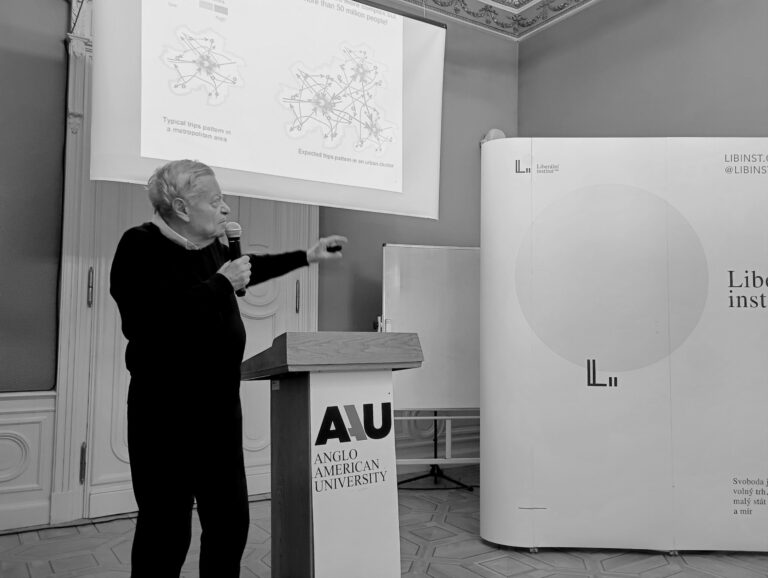Physical Address
304 North Cardinal St.
Dorchester Center, MA 02124
Physical Address
304 North Cardinal St.
Dorchester Center, MA 02124

As proposed, Moreno's 15-minute city has no chance of implementation, because economic and financial realities constrain the location of jobs, commerce, and community facilities. No planner can redesign a city by locating shops and jobs according to their own whims.
While reading someone else’s work, I recently ran across an article by David Cay Johnston of the New York Times, claiming that overseas oligarchs turning apartments all over the world into unused “ghost apartments”. In this article, Johnston writes: “In Paris, for instance, one apartment in four sits empty most of the time.” This claim struck me as so astonishing that as to be implausible, for the simple reason that in other “global” cities vacancy rates are much lower. For example, in New York only 9 percent of housing units are vacant, and most of those units are currently for sale or rent.* Even this vacancy level should not be particularly astonishing, since cheaper American cities often have higher vacancy rates. For example, Houston has an 11 percent vacancy rate, and Atlanta has an 18 percent vacancy rate. After googling “one in four paris apartments vacant” I found an article claiming that 26 percent of apartments in four Paris arrondisements (neighborhoods) is vacant- a much narrower claim, comparable to an assertion that one in four midtown Manhattan apartments is vacant. One would think that a journalist as distinguished as Johnston would know the difference between “Paris” and “some parts of Paris.” A more recent article claims that only 7.5 percent of Paris apartments are vacant- a lower vacancy rate than that of New York. Moreover, we don’t know what the local media means by “vacant.” Does this category limited to apartments that are unused 365 days a year? What about units that are rented out now and then through Airbnb? Or units that are currently being advertised for rent or sale? I suspect that the true number of “ghost apartments” is far lower than 7.5 percent, since in London (another “global city”) less than 1 percent of housing units are […]
Following up on my post yesterday skyscrapers in Europe, I’d like to explain why, in detail, central business districts are generally superior to off-center ones like La Défense outside Paris or Washington’s Virginia suburbs. It’s not that I just enjoy the spatial symmetry and organic shape of a centralized city – it’s actually more efficient! Neglect it, and you’re doing a disservice to your poorest citizens, who too often find themselves out of commuting range of many of a city’s jobs. …
I often hear from people who are defending Washington, D.C.’s height limit argue that the restriction gives the city a “European” feel. I disagree with this for a number of reasons – the city has much fewer historic downtown buildings, and the ones it does have are much younger than in the Old World….
I’m sure this is a copyright violation, but this blog isn’t very big and hopefully the AFP will appreciate the free translation. There were so many interesting things in this article about Paris’ first experiment in over 30 years with tall buildings, and American sources make the plan sound a lot more expansive that it really is, so I figured I’d just translate the whole thing. All measurements in metric; multiply meters by 3 and sq. meters by 10 to get rough approximations of their feet equivalents. Paris will soon welcome towers and tall buildings after an historic green light from elected officials, modifying a city code that dates back to 1977, relegating them however to the outskirts of the capital. The Council of Paris voted on Tuesday in favor of removing the height cap of the Local Urban Plan (PLU), which since 1977 has limited heights to 37 meters. There are, however, already a few taller buildings dating back from before the PLU, such as the Montparnasse Tower (210 meters). Called “historic,” this lifting of the height limit means that residential towers of up to 50 meters and office towers of up to 180 meters could sprout in specific neighborhoods of the capital. The municipal council revised the city code for the Masséna-Bruneseau area in the 13th arrondissement (in the southeast of paris), which will be the first neighborhood to welcome tall buildings. In this undeveloped area, at the heart of the Left Bank development zone (130 hectares), Anne Hidalgo, the Socialist Party deputy for urbanism, explained: “We have an ambitious economic development plan, with commercial space, hotels, and office space on the order of 100,000 sq. meters, with the possibility of four sites for buildings that could rise up to 180 meters.” Hidalgo even showed a full session […]